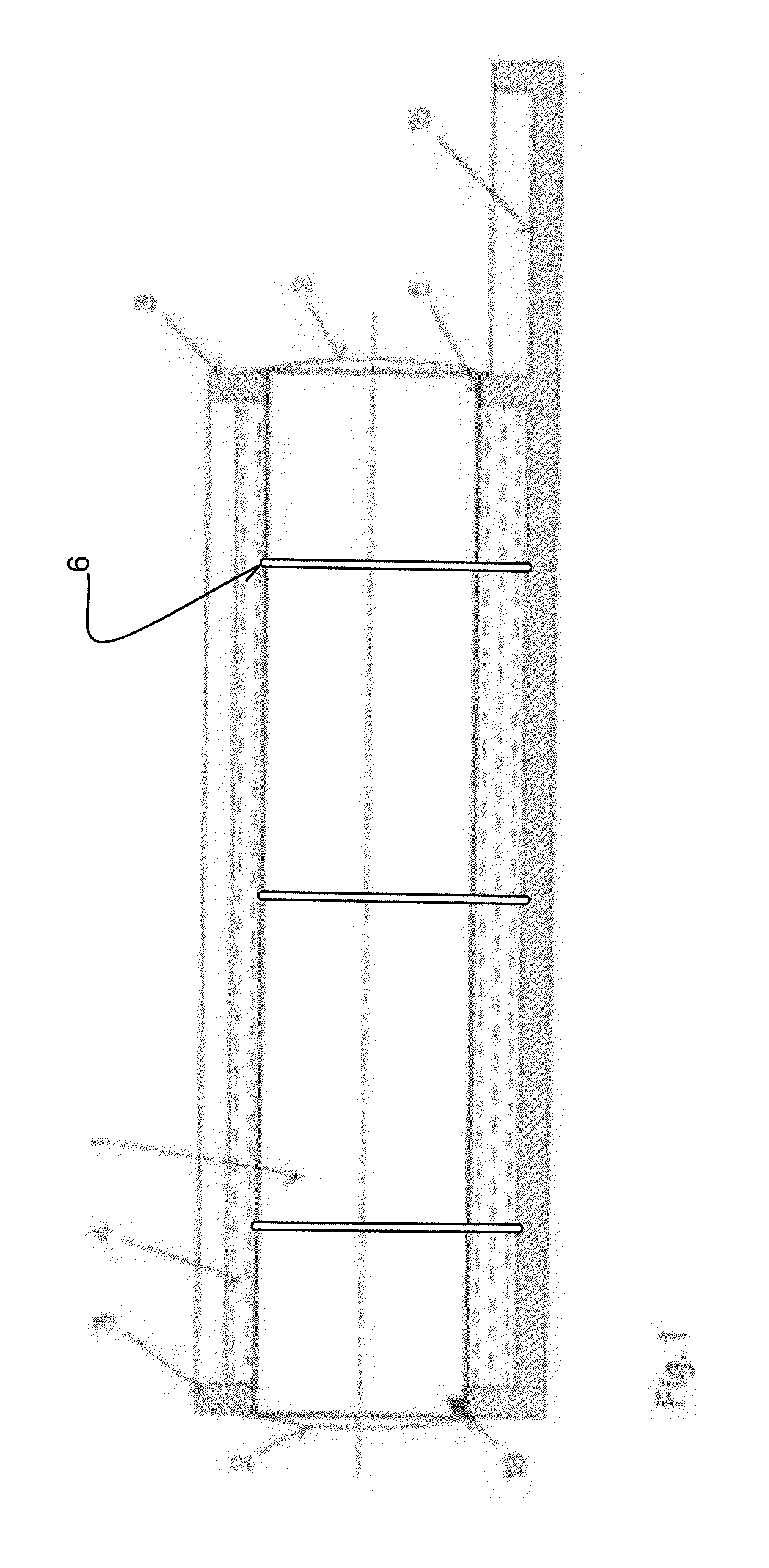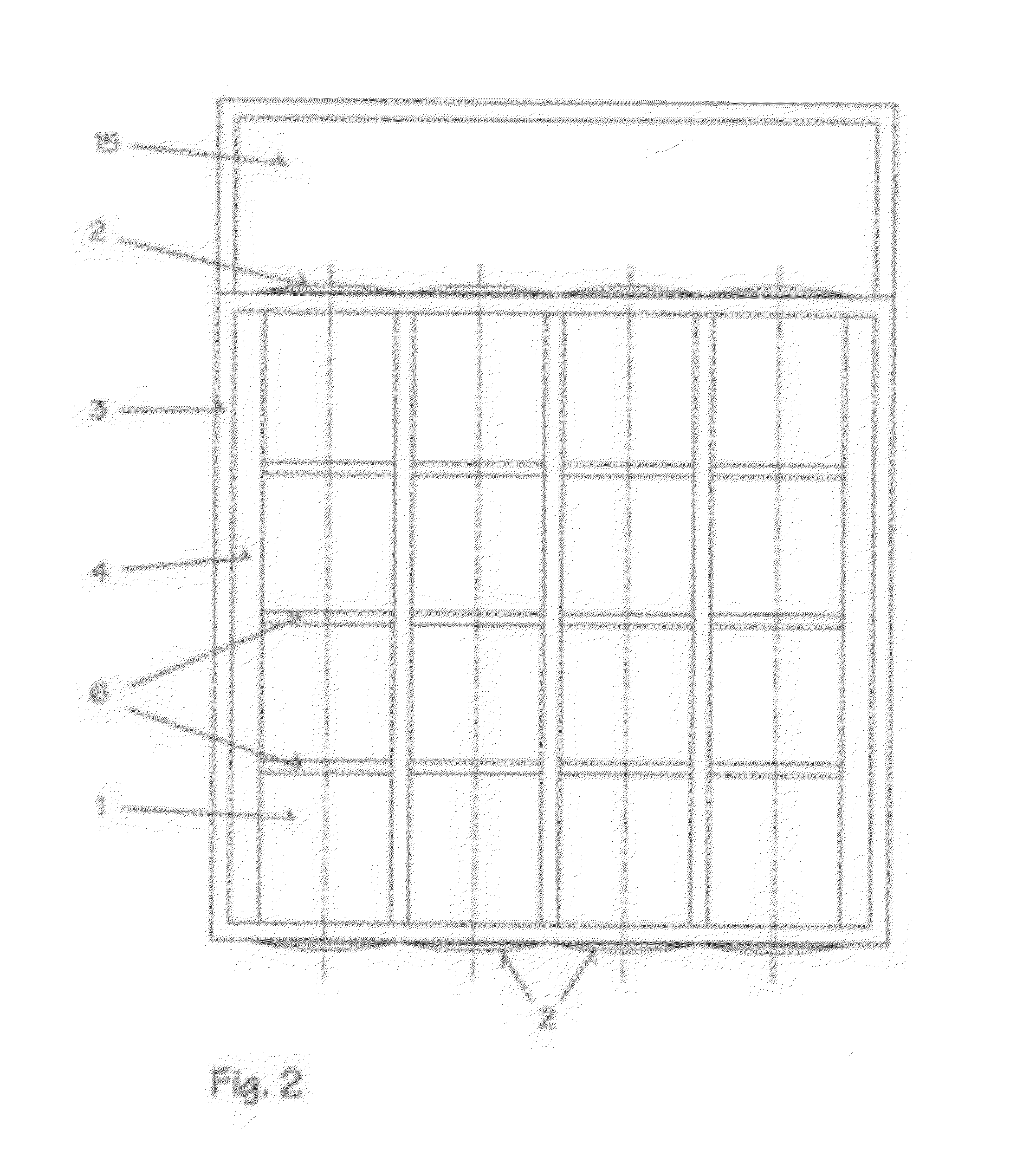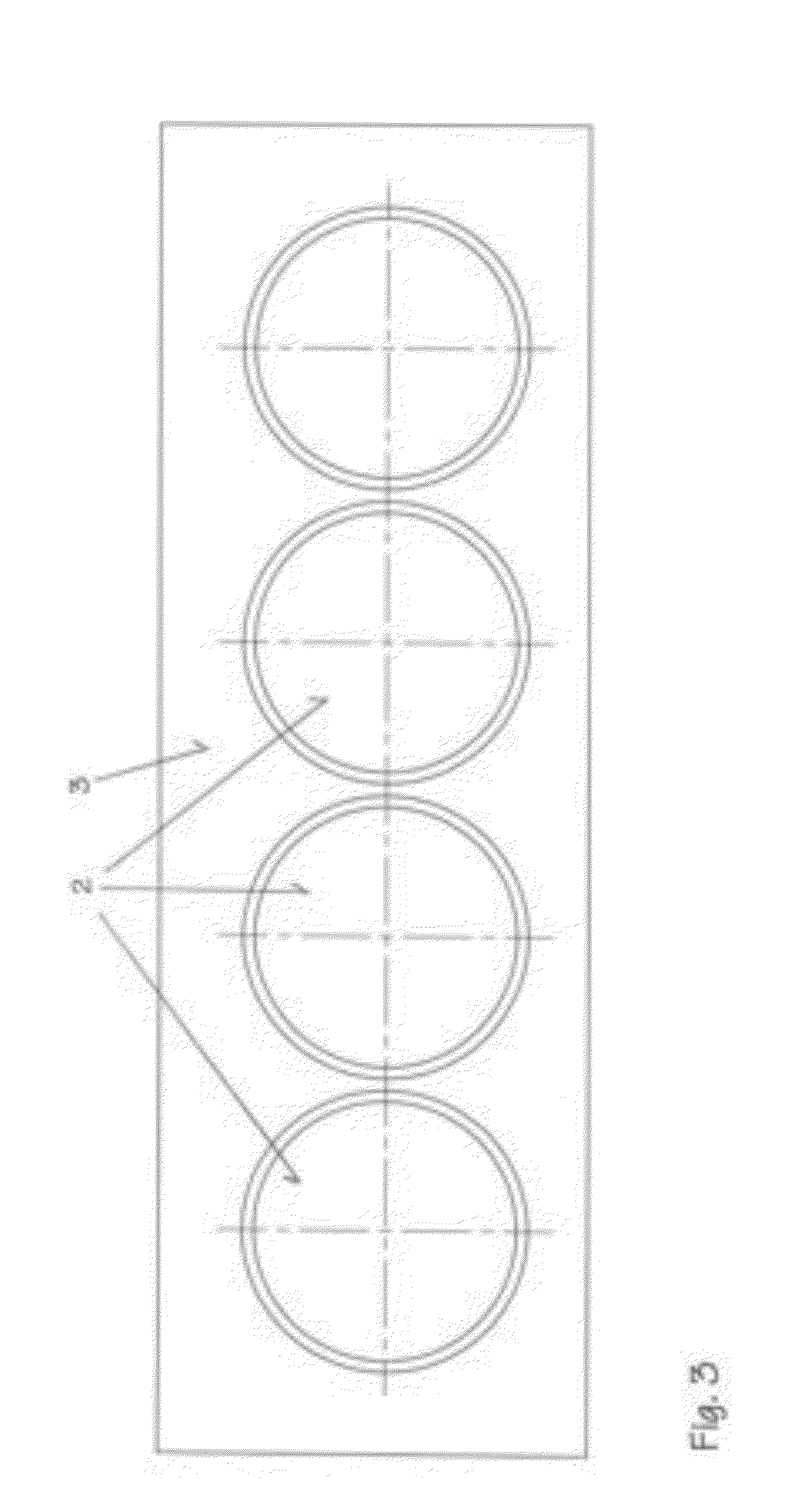Anaerobic Digestion System
a technology of anaerobic digestion and anaerobic digestion, which is applied in the direction of waste based fuel, biochemistry equipment and processes, biochemistry apparatus, etc., can solve the problems of high electricity consumption and heavy maintenance, inability to process materials with a low porosity, and inability to achieve low porosity. , to achieve the effect of facilitating the internal circulation
- Summary
- Abstract
- Description
- Claims
- Application Information
AI Technical Summary
Benefits of technology
Problems solved by technology
Method used
Image
Examples
Embodiment Construction
[0050]As it can be seen in the attached figures, this invention is relative to a new modular system of anaerobic digestion, substantially characterised by one or more horizontal digesters immersed in a heated liquid. In the first example shown in FIGS. 1-3, four parallel digesters are installed side by side. Each digester consists substantially of a cylindrical container 1, with its two ends closed by detachable covers 2, which is fixed to the two opposite walls of the tank 3 containing the heated liquid 4. The digester is gas and water-tight and it is provided with adequate seals 5 built during the construction phase to prevent the leakage of the liquid from the tank. In addition, these digesters, being immersed in the liquid, are subject to buoyancy, particularly when they are empty or during the filling phase, thus various tension rods 6 encircle the lateral surface of the digester and are anchored to the tank floor. In another embodiment not shown the digesters are parallelepipe...
PUM
| Property | Measurement | Unit |
|---|---|---|
| temperature | aaaaa | aaaaa |
| temperature | aaaaa | aaaaa |
| shape | aaaaa | aaaaa |
Abstract
Description
Claims
Application Information
 Login to View More
Login to View More - R&D
- Intellectual Property
- Life Sciences
- Materials
- Tech Scout
- Unparalleled Data Quality
- Higher Quality Content
- 60% Fewer Hallucinations
Browse by: Latest US Patents, China's latest patents, Technical Efficacy Thesaurus, Application Domain, Technology Topic, Popular Technical Reports.
© 2025 PatSnap. All rights reserved.Legal|Privacy policy|Modern Slavery Act Transparency Statement|Sitemap|About US| Contact US: help@patsnap.com



